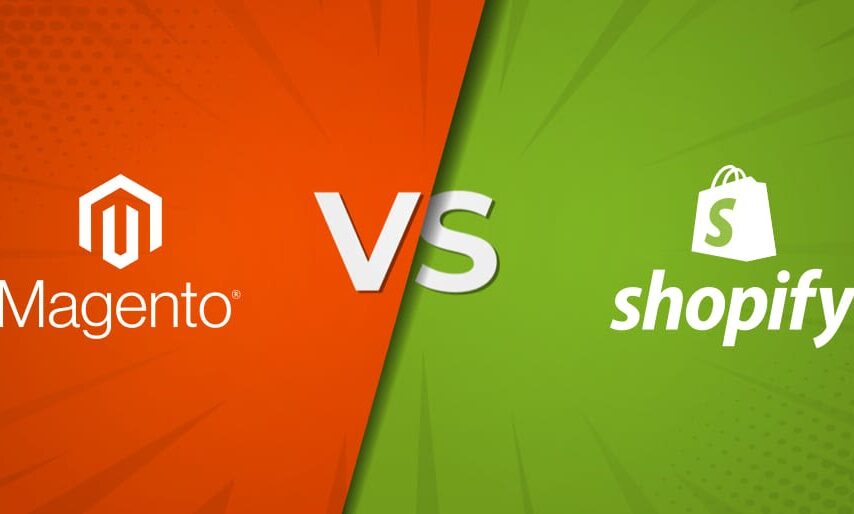The e-commerce world has taken a huge leap forward in recent years, and to keep up, in this article, we’ll be comparing Shopify vs. Magento, two of the most famous online sales tools.
It happens that, for various reasons, having a digital store is a profitable reality. This is obvious to service companies, but today it is also a great option for businesses that make physical products.
If you already have a Shopify store and need shopify website maintenance, then you know where to go.
It is important to remember that, despite significant material cost optimization in the transition to virtuality, online sales entail other problems. One is what tools you must provide yourself with in order to provide a good customer experience.
This is why some digital solutions companies have developed a series of applications and web platforms that are designed to meet the needs of virtual commerce. One such digital marketing expert is “Tada” that helps reduce shopping cart abandonment, by installing full screen & gamified pop ups that help increase subscribers, conversion rate & sales by two folds. It also specializes in designing a wheel of fortune website and incorporates the best store conversion apps & tools. In one such store, customers win a discount coupon, by spinning a wheel of fortune, and thereby shop with those coupons on the same site.
One such popular tool or method is A/B testing that helps in Shopify store optimization, by improving a website’s conversion rate, by retaining customers and visitors. It is by accurately comparing the two versions of a web page, upon certain performance metrics that help single-out the winning eCommerce design. Such kind of split testing is done by professionals like “TridentAB” that offers an ‘easy-to-use’ editor to set up split tests within minutes, and gain valuable customer insights.
Both Shopify and Magento are some of the most recommended options by various digital commerce professionals.
Shopify and Magento are two online selling tools known for their versatility and resolution flexibility. Both have a large number of customers who use them to make their sales.
Which is better: Magento or Shopify?
Both Shopify and Magento have important recognition in the e-commerce market for their sales management capabilities and extensive SEO capabilities to drive organic traffic to your company’s store.
It is noteworthy that these two tools allow you to upload an unlimited number of products to the store, which is very useful for companies offering a wide variety of products. On the other hand, both are very powerful options with a very functional design that reflects concern for the needs of the users.
That said, they have a number of differences in functionality, cost, and usability, which we will discuss in detail later.
Functionality of each platform
Both Magento and Shopify provide users with basic ecommerce store functionality that is highly efficient and complete so that basic needs will be met no matter which one you choose. They also have the ability to implement them immediately and maintain continuity in their use.
What is CPL and why calculate it?
Shopify and Magento have shopping carts, product pages, payment modules, and collections to name just a few.
Apart from these general characteristics, the platforms differ in the services provided by the virtual store. To better understand what we are talking about, let’s look at a few examples.
Magento store interface
Magento is an open source digital commerce platform. Its main functionality is to allow commercial exchange through digital media, while it provides virtual support through Adobe’s e-commerce application.
In addition, it offers other benefits such as B2B, configuration tools and performance monitoring applications, and it also performs automatic data backups that allow information to be restored after failure or storage.
Plus, it has fast technical support, runs extensive alerts, and provides a resource library and customer case studies. It also allows integration with other tools.
In Shopify’s case, functionality depends on the plan that is contracted.
Shopify virtual store
However, based on its basic plan, it already makes a large list of services available to businesses. The online store, of course, is the main one and allows you to download an unlimited number of products. In terms of the service, it offers 24/7 support as well as SSL certificate and fraud analysis.
In terms of sales methods, the basic plan allows you to work with different channels and locations in addition to working with 133 different currencies. It also allows you to manually create orders, retrieve abandoned carts, and trigger discount codes.
The Advanced Plan adds other features such as a more sophisticated report generator and collection of shipping cost data calculated by third parties.
One difference between both ecommerce platforms is that Magento is an open source ecommerce tool while Shopify is paid software.
This means that if you are using Magento, the hosting and web platform development costs will have to be borne by your company. Hence, you must own (or otherwise contract) the infrastructure to host the domain and support development.
The advantage of dealing with such costs is that the generated code becomes the final property of the company. Plus, with more control over the platform, there will be more room for customization and adaptation to suit your needs.
Shopify store setup service will help you to make high-quality customization.



